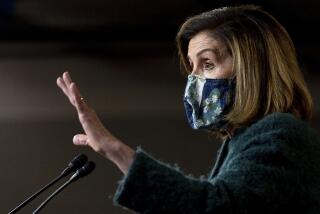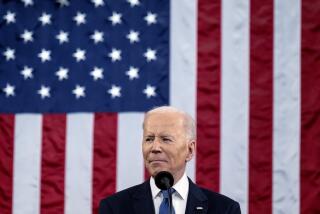Op-Ed: The economic recovery can benefit all Americans. Here’s how

The expiration of enhanced unemployment benefits in the United States has come and gone with no noticeable effect on the number of Americans seeking work. This should come as no surprise. Arguments made by uninformed and self-interested low-wage employers who blamed the pandemic-era safety net for their inability to fill open positions never held water. Research from the Federal Reserve Bank of San Francisco has shown that early suspension of benefits in some states had no noticeable effect on their unemployment rates.
The challenge of employing more than 8 million jobless Americans will not be solved by cutting benefits. Rather, we need a more substantial change in our social contract. Before the pandemic, the U.S. economy was close to full employment (as traditionally defined), with an unemployment rate of 3.5% in February 2020. The economy had added more than 2 million jobs over the previous year, in what had been the longest economic expansion in U.S. history. But COVID-19 — and the lockdowns used to combat it — changed that almost overnight. Within the space of a month, 20.5 million U.S. jobs were lost, and the unemployment rate peaked at almost 15%.
Rapid action by the Federal Reserve and an unprecedented fiscal response through the American Rescue Plan and the Coronavirus Aid, Relief, and Economic Security Act stemmed the tide. Many jobs switched to remote work, and the economy seemed stabilized enough to continue until vaccines arrived and allowed for a reopening. By September 2021, employment had increased by 17.4 million jobs from its previous trough, and the unemployment rate had dropped to 4.8%. At the end of the month, there were more job openings (10 million) than people seeking work (8.4 million). The Fed is expected to start tapering its support for the economy in the next couple of quarters.
But COVID-19, and the early response to it, laid bare deep inequities that have only gotten worse. The recovery has not helped women, people of color or low-wage workers in the hospitality, travel and care industries. (Of all groups, Black women have benefited the least from the recovery.) By May 2021, workers with college degrees had fully recovered their pandemic job losses, whereas the cohort without college degrees, accounting for more than half the unemployed, remains 4.5 million jobs short of pre-pandemic levels.
Although the overall labor-market tightening has started to affect wages, benefits and working conditions, market factors alone will not close the remaining gaps, especially in jobs with low starting wages or variable work hours. Without even larger changes in wages and more predictable scheduling, many restaurants and retailers will still struggle to fill positions.
Automation will address some of these shortages. Use of self-checkout at large retailers is soaring, and McDonald’s is testing kiosks for customers to place food orders. These technologies not only facilitate transactions with fewer employees but also prompt customers to order more through product recommendations.
But much in-person service work is difficult to automate. Bureau of Labor Statistics data indicate that U.S. job growth can be expected to include more than 3 million jobs in personal care, food service and hospitality. At the same time, population aging will impede labor-market growth, and pressures on many working-age people to care for children and elders will further constrain the available workforce. Making matters worse, in one recent survey, 42% of women and 35% of men say they are suffering from burnout and may resign in the coming months.
Some states have taken steps to address the workforce and care challenge. California, for example, has extended paid family leave and expanded its earned income tax credit and is now paying for universal preschool, free community college, and generous Medicaid and Affordable Care Act programs (Medi-Cal and Covered California).
But federal action is needed to sustain and scale up these policy innovations. The Democrats’ budget proposal includes several key proposals that would help working Americans. The $1.8-trillion American Families Plan, for example, would provide universal preschool, set limits on child-care costs while increasing provider pay, and extend child tax credits and paid family leave.
Additional work will be needed to address the structural challenges in the care economy. By 2050, the number of people 65 and older with Alzheimer’s or dementia may grow to 12.7 million. Yet, right now, 83% of the help provided to older adults in the U.S. comes from family members, friends or other unpaid caregivers. Because most paid care jobs are at least partly funded through Medicaid and Medicare, a national-level intervention is needed. Promising innovations include expanding the earned income tax credit to those caring for children or elders at home.
As the U.S. pulls out of the pandemic-induced downturn, we cannot ignore deep challenges in our labor markets. Automation, federal resources and policy innovation are necessary to ensure that the recovery reaches everyone.
Laura Tyson, former chair of the White House Council of Economic Advisors, is a professor in the Graduate School at the Haas School of Business at UC Berkeley. Lenny Mendonca is a former chief economic and business advisor to Gov. Gavin Newsom and chair of the California High-Speed Rail Authority.
More to Read
A cure for the common opinion
Get thought-provoking perspectives with our weekly newsletter.
You may occasionally receive promotional content from the Los Angeles Times.










